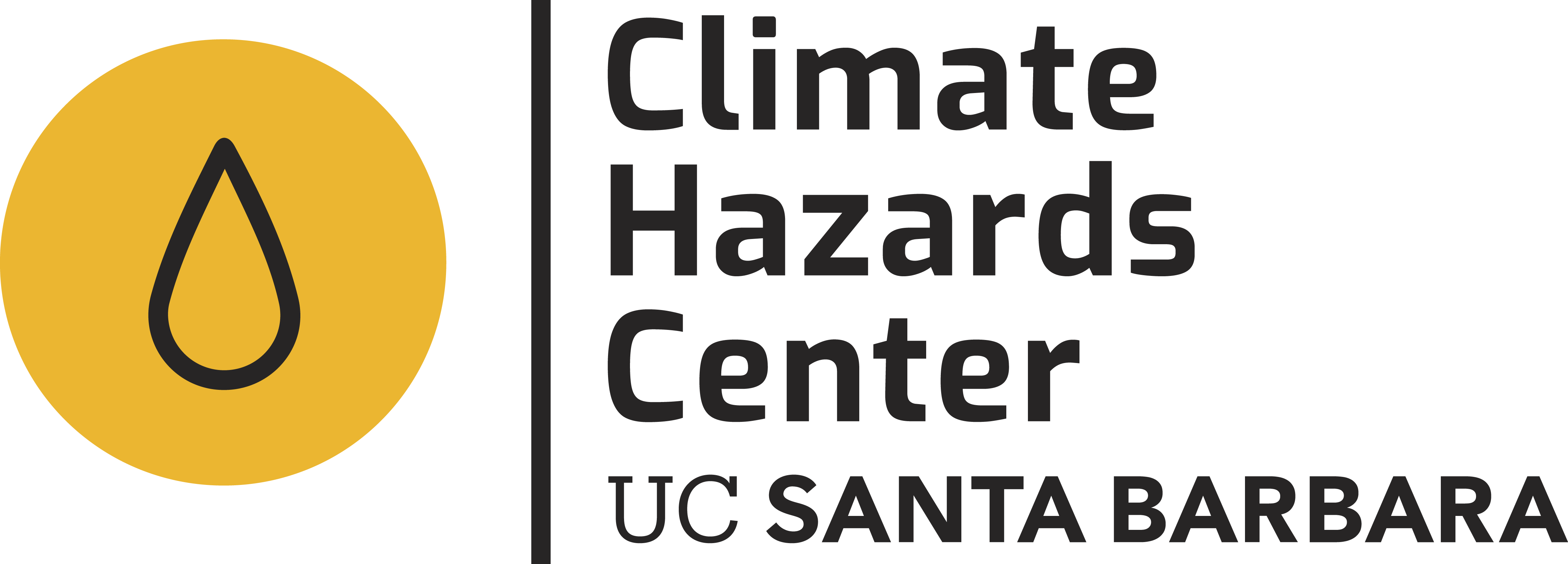Latest SubC forecasts and more about SubC
Subseasonal predictions for the next two to six weeks bridge the gap between short-range weather forecasts and long-range seasonal climate predictions. The UCSB Climate Hazards Center uses the latest Subseasonal Consortium (SubC) forecasts (Pegion et al., 2019), acquired from the IRI Data Library, to provide global and regional maps and data that can support outlooks of agricultural and hydrological conditions and early warning systems for food security.
These subseasonal forecast maps show a variety of climate variables, including rainfall and daily minimum, maximum, and mean temperatures, for upcoming weeks and next 15 and 30 day periods. Multi-model ensemble and the individual model forecasts are presented together. CHC also produces high-resolution, bias-corrected regional forecast maps of consecutive rainy and dry days and other agroclimatic-relevant metrics for West Africa.
The links below provide direct access to global weekly, 15-day, and 30-day forecast maps and maps for selected regions. Please read on for more information.
Global
Precipitation
Temperature Average
Temperature Max
Temperature Min
Africa
Precipitation
Temperature Average
Temperature Max
Temperature Min
East Africa
Precipitation
Temperature Average
Temperature Max
Temperature Min
Southern Africa
Precipitation
Temperature Average
Temperature Max
Temperature Min
West Africa
Precipitation
Temperature Average
Temperature Max
Temperature Min
Central America
Precipitation
Temperature Average
Temperature Max
Temperature Min
Southeast Asia
Precipitation
Temperature Average
Temperature Max
Temperature Min
Central and Southern Asia
Precipitation
Temperature Average
Temperature Max
Temperature Min
Description of Experimental Subseasonal Forecasts (SubC)
Precipitation values are summed for weekly or monthly totals. Daily averages are used for other variables (e.g., average temperature over the next 30 days).
The forecast anomaly is calculated relative to each model’s own historical forecast climatology, which consists of hindcasts made for the target period during 1999-2016. For example, to convert subseasonal forecasts from a given model, released during the first week of January, all historical forecasts from that given model, which were released in the first week of January (from January of 1999 to 2016) were used as its climatology. The multimodel mean is a simple average of the forecast anomalies from all individual models. Similarly, the probabilistic anomalies are based on the number of members that fall below or above the 33rd and 66th percentiles for each model. This count is summed across all models in order to get an ensemble probabilistic prediction.
The operational models currently included in this SubC resource are ECCC-GEPS8, EMC-GEVSv12_CPC, ESRL-FIMr1p1, GMAO-GEOS_V2p1, NCEP-CFSv2, and RSMAS-CCSM4. Each model is initialized at least once per week, and the length of the model forecast ranges from 32-45 days. The number of model members range from 4 to 31. However, in order to ensure equal weighting, only the first 4 members of each model are included in the calculation of the ensemble mean and probabilistic forecasts. Each model provides a different set of variables, but as of now all 6 models provide precipitation and daily temperature average forecasts.
Reference
Pegion, K., B.P. Kirtman, E. Becker, D.C. Collins, E. LaJoie, R. Burgman, R. Bell, T. DelSole, D. Min, Y. Zhu, W. Li, E. Sinsky, H. Guan, J. Gottschalck, E.J. Metzger, N.P. Barton, D. Achuthavarier, J. Marshak, R.D. Koster, H. Lin, N. Gagnon, M. Bell, M.K. Tippett, A.W. Robertson, S. Sun, S.G. Benjamin, B.W. Green, R. Bleck, and H. Kim, 2019: The Subseasonal Experiment (SubX): A Multimodel Subseasonal Prediction Experiment. Bull. Amer. Meteor. Soc., 100, 2043–2060, https://doi.org/10.1175/BAMS-D-18-0270.1
Acknowledgments
The Climate Hazards Center is grateful to the International Research Institute for Climate and Society (IRI) Data Library, based at Columbia University, for providing organized and timely access to the SubC forecasts. We also thank the climate modeling groups (Environment and Climate Change Canada, NASA/GMAO, NOAA/EMC/NCEP, NOAA/ESRL, and the University of Miami) for producing and/or making available their model output, and the agencies who support these programs.
The Climate Hazards Center acknowledges support from NASA SERVIR Applied Sciences Team grant 80NSSC20K0163, NOAA Regional Integrated Sciences and Assessments (RISA)'s support through the California–Nevada Applications Program (Grant number: NA17OAR4310284), the NASA Harvest Consortium, Award No #80NSSC18M0039, and United States Agency for International Development (USAID) cooperative agreement #72DFFP19CA00001.
